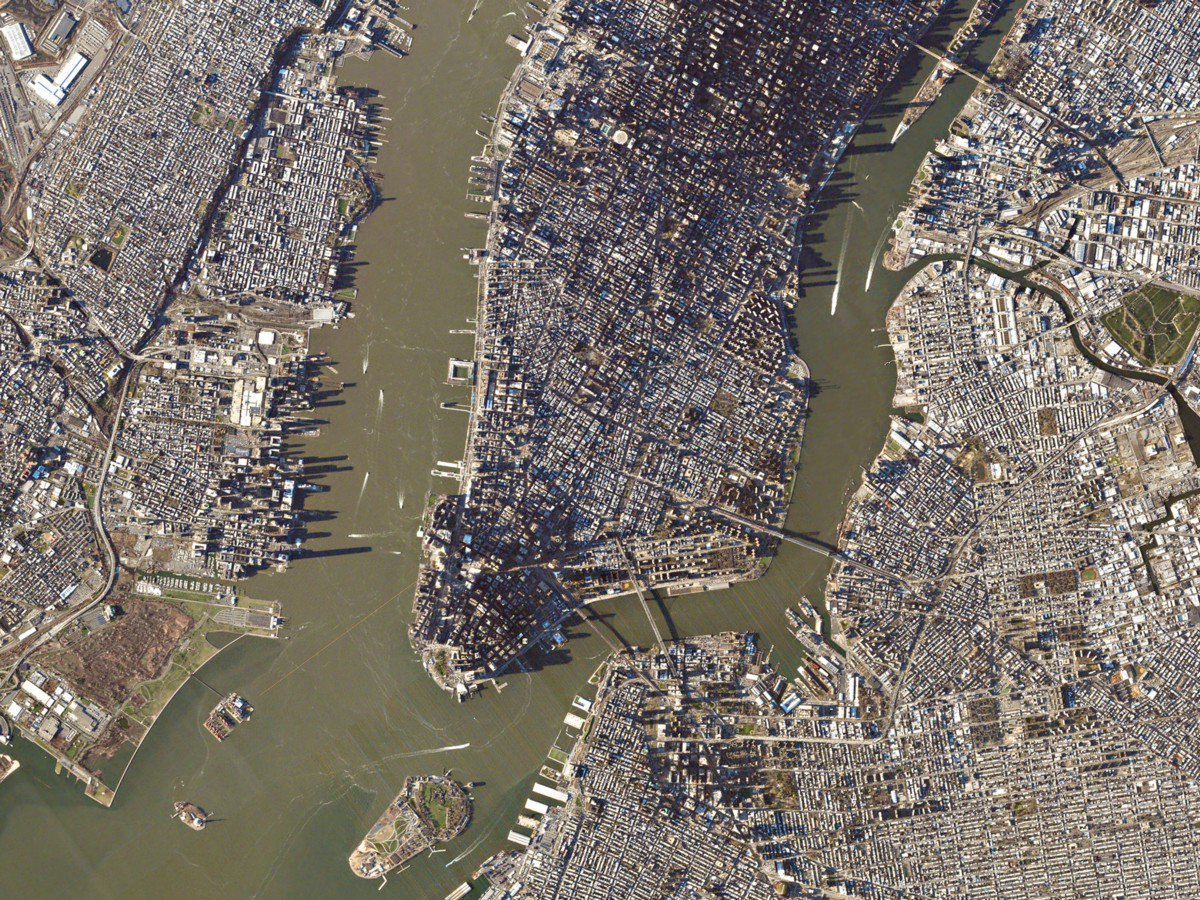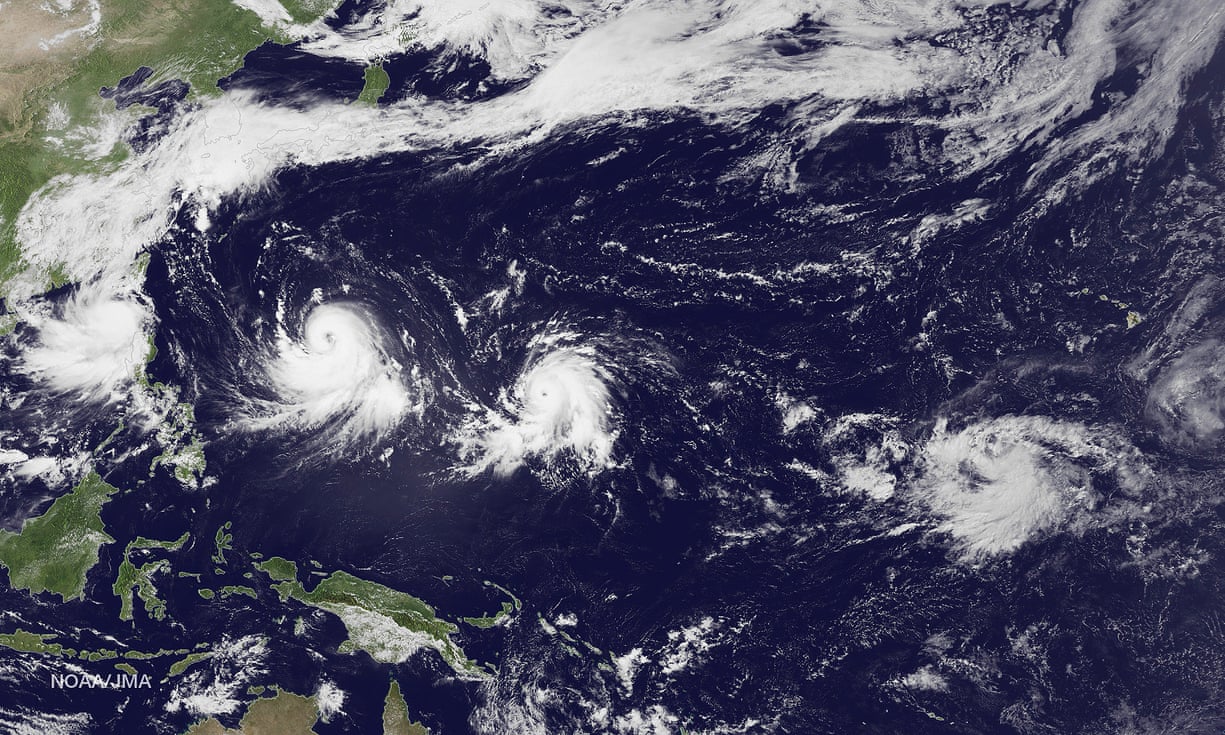Illustration depicting the circulation of the global ocean.
Throughout the Atlantic Ocean, the circulation carries warm waters (red arrows) northward near the surface and cold deep waters (blue arrows) southward.
(Image courtesy of NASA/JPL)
From Yale E360 by Nicola Jones
Scientists are closely monitoring a key current in the North Atlantic to see if rising sea temperatures and increased freshwater from melting ice are altering the “ocean conveyor belt” — a vast oceanic stream that plays a major role in the global climate system.
Melting ice flows into the northern Atlantic Ocean in eastern Greenland.
courtesy of Mariusz Kluzniak / Flickr
Susan Lozier is having a busy year.
From May to September, her
oceanographic team is making five research cruises across the North
Atlantic, hauling up dozens of moored instruments that track currents
far beneath the surface.
The data they retrieve will be the first
complete set documenting how North Atlantic waters are shifting — and
should help solve the mystery of whether there is a long-term slowdown
in ocean circulation.
“We have a lot of people very interested in the
data,” says Lozier, a physical oceanographer at Duke University.
A similar string of moorings across the middle of the Atlantic,
delving as deep as 3.7 miles
from the Canary Islands to the Bahamas, has already detected a
disturbing drop in this ocean’s massive circulation pattern.
Since those
moorings were installed in 2004, they have seen the Atlantic current
wobble and weaken by as much as 30 percent, turning down the dial on a
dramatic heat pump that transports warmth toward northern Europe.
Turn
that dial down too much and Europe will go into a deep chill.
Researchers have been worried about an Atlantic slowdown for years.
The
Atlantic serves as the engine for the planet’s conveyor belt of ocean
currents: The massive amount of cooler water that sinks in the North
Atlantic stirs up that entire ocean and drives currents in the Southern
and Pacific oceans, too.
“It is the key component” in global
circulation, says Ellen Martin, a paleoclimate and ocean current
researcher at the University of Florida.
So when the Atlantic turns
sluggish, it has
worldwide impacts:
The entire Northern Hemisphere cools, Indian and Asian monsoon areas
dry up, North Atlantic storms get amplified, and less ocean mixing
results in less plankton and other life in the sea.
Paleoclimatologists have spotted times in the deep past when the current
slowed quickly and dramatically, cooling Europe by 5 to 10 degrees C
(10 to 20 degrees F) and causing far-reaching impacts on climate.
Modelers have tried to predict how human-caused climate change might
impact the Atlantic current, and how its slowdown might muck with the
world’s weather even more.
But years of intensive peering at this
question haven’t yet provided much clarity.
Now, debate is raging about whether the recent Atlantic slowdown has
been triggered by climate change, or is just part of a normal cycle of
fast and slow currents.
New studies in the last few years and months
have come out supporting both prospects.
The new data from the north,
Lozier and others hope, might help to sort things out.
Ocean currents (1943)
When the Hollywood blockbuster “The Day After Tomorrow” threw the
Atlantic Ocean current into the popular spotlight in 2004, researchers
laughed at its portrayal of an ocean current shutdown.
In the movie, the
world was plunged into a new ice age in a matter of days, with cold
fronts literally chasing people at a sprint.
But the disaster at the
core of the film was based in some reality.
A huge amount of heat is moved around our planet by a single ocean
current system — the Atlantic Meridional Overturning Circulation (AMOC) —
which accounts for
up to a quarter
of the planet’s heat flux.
The system is driven by density: waters that
are cold or salty are denser and so dive down to the ocean floor.
As a
result, today, cold waters sink in the North Atlantic and flow
southwards, while warm tropical waters at the surface flow northwards in
the Gulf Stream, making northern Europe unusually mild for its
latitude.
But if northern waters get too warm, or too fresh from melting
ice, then they can stop being dense enough to sink.
That causes a major
traffic jam for the water attempting to move north, and the system
grinds to a halt.
This has happened before.
Researchers have spotted
dramatic AMOC slowdowns
of more than 50 percent during the last glaciation some 100,000 to
10,000 years ago, over a period perhaps as short as decades.
The
theory
—which is being debated — is that as ice sheets got too big to stay
stable, armadas of icebergs broke off, floated out to sea, and melted;
even though the waters were chilly, the huge influx of freshwater made
them less dense, and so they stopped up the currents.
Looking further
back in time to the last interglacial period about 120,000 years ago,
which is more like today’s interglacial world, is trickier.
But a
study of some proxy measurements has shown that there may have been rapid slowdowns in the last interglacial, too.
“It seems to be a fairly stable system, until we push it just the right
amount and then we’re in terrible shape,” says Martin.
“I don’t think
you want to play with the AMOC.”
The last review by the Intergovernmental Panel on Climate Change
concluded that the AMOC is very likely to slow by the end of the
century, perhaps by as much as 54 percent in the worst-case scenario,
where emissions keep going up and global temperatures rise about 4
degrees C.
But the range of possible slowdowns in these predictions is
huge, starting at just 1 percent for an emissions-restricted world.
If the North Atlantic current slows dramatically, then the entire
Northern Hemisphere would cool; a complete collapse of the current could
even
reverse global warming
for about 20 years.
But the heat that ocean currents fail to transport
northwards would make parts of the Southern Hemisphere even hotter.
And a
cooler north isn’t necessarily good news.
Should the AMOC shut down, models show that changes in rainfall patterns would
dry up Europe’s rivers, and North America’s entire Eastern Seaboard could see an
additional 30 inches of sea level rise as the backed-up currents pile water up on East Coast shores.
But to pin down what the AMOC is going to do, researchers need to better
understand what it’s doing right now.
And that is proving tricky.
The problem researchers face is that the AMOC is extremely capricious,
wobbling around more from year to year than the expected shift to date
from global warming.
Just like temperature or sea level records, this
makes for a very noisy signal in which it’s hard to see long-term
trends.
“It’s analogous to the early difficulty seeing a global warming
signature,” says Columbia University paleoclimatologist and
oceanographer Jerry McManus.
“Now that signature is compelling, but it
took a while to see it clearly. Now that’s happening with AMOC.”
The first string of moorings put in the ocean to investigate this
current — the so-called RAPID array, with more than a dozen moorings
from Florida to the Canary Islands — were deployed in 2004.
They have
shown a drop in water flow from 20 sverdrups (or million cubic meters of
water per second) to 15 sverdrups over a decade.
But the variability is
huge.
In 2009 to 2010, for example, the current was particularly
sluggish for some reason, with water transport dropping by about a
third.
That helped to make the next winter the coldest for the United
Kingdom since 1890, with heavy snowfalls and travel chaos.
And from New
York to Newfoundland,
sea levels were boosted by five inches.
Lozier’s data from the northern part of the ocean — in an array called
OSNAP — will add a missing piece to the puzzle of what the current is up
to.
A pocket of cold water has formed in the northern Atlantic Ocean from
melting Arctic and Greenland ice.
Scientists say it has the potential to
disrupt ocean circulation.
Actual measurements of the AMOC across the ocean only date back to 2004;
to get a longer-term picture, researchers have to rely on other
measurements to infer ocean current.
Last year, Stefan Rahmstorf, of the
Potsdam Institute for Climate Impact Research in Germany, grabbed media
headlines with a paper looking at sea surface temperature as a proxy
for current.
That study argued that the
Atlantic current has slowed
more since 1975 than at any point in the last thousand years, creating
an obvious chilly blob over the North Atlantic — one of the only spots
on the planet that’s actually cooling.
The slowdown started in about
the 1930s, Rahmstorf says,
strongly suggesting that mankind is to blame.
Others aren’t yet convinced.
“The jury is still out,” says Lozier, who
notes that sea surface temperature is a messy proxy for current.
“Weakening is a possibility, but it hasn’t been proven yet,” agrees
Laura Jackson of the UK’s Met Office, who studies the AMOC.
Jackson’s own work in a special collection of papers about ocean circulation in Nature Geoscience this July showed that the AMOC has a
decadal oscillation
that naturally makes it swing from high to low flow.
The mechanisms
behind that aren’t well understood, but the upshot is that the slowdown
seen since 2004 could just be due to one of these oscillations.
It’s
also possible that both things are true: There could be a decadal-scale
oscillation sitting on top of a longer-term slowdown caused by climate
change.
Another paper published in that same issue of Nature Geoscience,
however, suggests that the amount of meltwater from Greenland isn’t yet
enough to muck with the AMOC, despite the fact that Greenland is
shedding nearly
300 billion tons
of water a year.
“It sounds like a lot of water, but it’s going over a
big area,” says Jackson.
Most of the freshwater pouring into the
Labrador Sea seems to be swirled off down the Canadian coast by smaller
ocean currents or eddies, instead of building up and stopping the AMOC.
If the AMOC has really been slowing since about 1930 thanks to
humanity’s influence on the climate, the exact way that is happening
remains unclear.
It could simply be the warming of Atlantic waters in
critical areas, or the introduction of extra freshwater from increased
rain.
“We need another decade of observations, at least,” says Jackson,
who also keenly awaits the OSNAP data sometime next spring.
“Knowing
what’s happening at high latitudes well help us determine which model is
right,” she says.
Meanwhile a third line of moorings in the South
Atlantic, from Brazil to South Africa, should start to highlight what’s
happening at the other end of the ocean.
For now, everyone awaits more data to see whether the AMOC is slowing
down and, if so, what that will mean for the planet.
“It’s complicated
because there are feedbacks, and we don’t understand them all.
Some
could be positive; some could be negative,” says Jackson.
But, Jackson
adds, “The general feeling is, ‘Don’t panic.’”
Links :


















